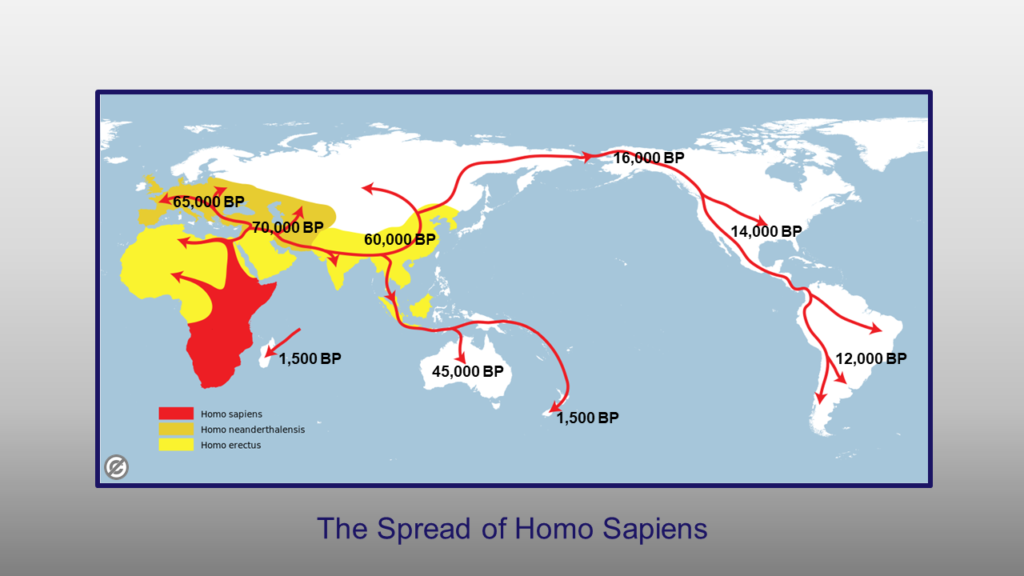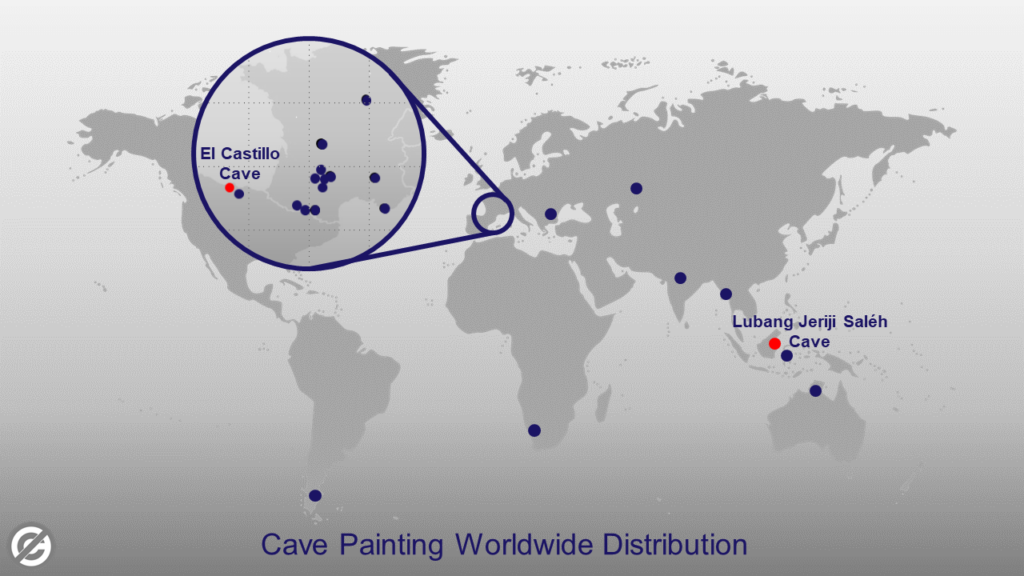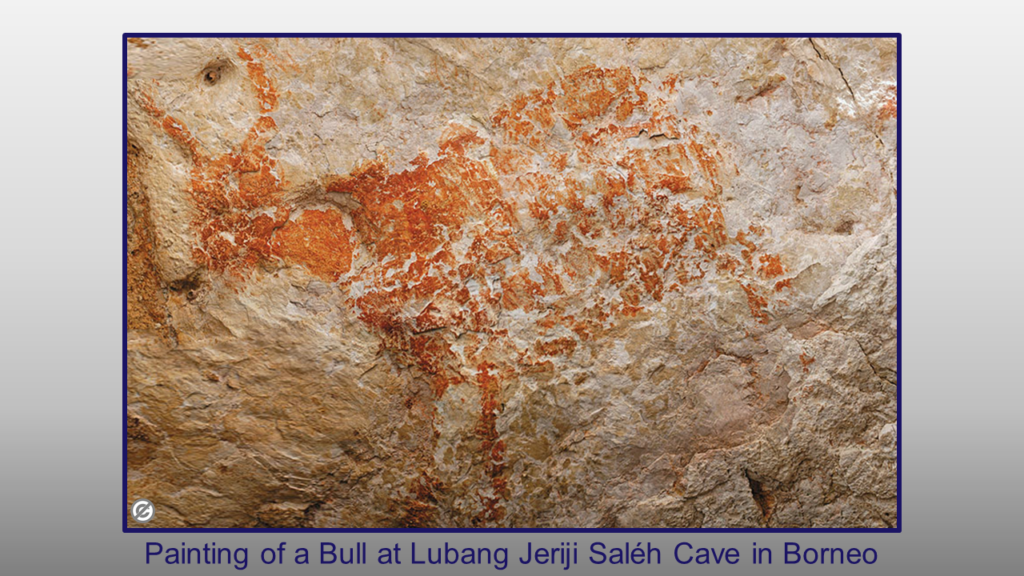Introduction
Over the last few weeks, we have explored events which occurred in the last few hundred years.
Now, I would like to explore the origins of Project Management.
- Who was the first Project Manager?
- When did he/she live?
- What was the first project?
These are difficult questions.
When we reflect on our history as Homo Sapiens, we can see the clear outcomes of projects that have survived to the present day.
- Our modern world abounds with examples of innovative Victorian engineering projects.
- Asia has countless architectural examples.
- We marvel at the Meso American pyramids.
- Europe is dotted with Paleolithic stone circles.
- Prehistoric cave art is found in many locations around the world.
Our search takes us back tens of millennia. But what were those project managers like?
The Cognitive Revolution
In his book “Sapiens – A Brief History of Humankind”, Harari tells us that there was a cognitive revolution around 70,000 years ago. Something changed for one of the several groups of hominins that roamed the African and Eurasian continents. That group Homo Sapiens developed a rare talent – the talent to imagine.
But not just imagine things in their head, they developed the ability to imagine and share concepts that were not real. What Harari calls an imagined order.
For example, Money; today we all accept the concept of money, and our systems and civilization function and thrive. If a large proportion of the population ceased believing in the “idea of money”, our system would collapse.
This is not the case for a natural order, gravity for example, works whether we believe in it or not.
Imagined orders can be immensely powerful and indeed can cause people to act against their best interests and against natural orders.
For example, there is evidence that wearing a face mask can help prevent the transmission of disease (natural order), but it infringes my rights to be told to wear one for the common good (imagined order), so I refuse.
This action would have been incomprehensible and unacceptable to our hunter- gatherer ancestors, because the action threatens the survival of the group, and therefore the individuals that comprise it. It would be “so long buddy, you’re on your own”, and in those days that was a death sentence.
So! The scene was set for project management because what is a Project Charter, but an imagined order?
Out of Africa
Armed with their new box of tricks, Homo Sapiens started migrating out of Africa, into the Middle East and Asia, where they encountered other human species.
There is no reason to assume this was an organized enterprise, they were simply expanding into new territory in a sequential manner.
The inhabitants of the Middle East and Europe were the Neanderthals who were more robust and conditioned to the colder climates but would ultimately be replaced by Homo Sapiens. This process took place over millennia and would be repeated throughout Asia, until Homo Sapiens were the only human species on the earth.
It is not clear how this happened, whether violently, by other means, or a combination.
Given mankind’s violent history, it seems inconceivable that violence did not feature somewhere. It would seem that the advantage lay with the stronger and more robust Neanderthals. This would certainly be true on average, with individuals and small groups, but armed with their ability to create imagined orders, enabling larger group cooperation Homo Sapiens won the day.
We will probably never know the true story, but it may be instructive to examine another conflict between two similar species.
The American grey squirrel was introduced into Britain in the 1870s, and quickly started displacing the indigenous European red squirrel. By the middle of the 20th century the red was in real trouble and only found in a few areas of Scotland.
There is no overt violence between the two species, so, what has caused the rapid decline in the reds?
- Both species compete for the same food and habitat. (the greys tend to out compete the reds)
- Human induced habitat reductions seem to have a more pronounced effect on the reds.
- There is some evidence that the reds compete better in the indigenous mixed forests. (which are often replaced by managed forestry)
- The greys are carriers of squirrel pox which kills the reds.
- The high death rate and lower birth rates of reds allow the grey to expand into the vacated space.
- The competitive exclusion principle contends that if two species compete for the same resources, the one with even a minimal advantage will over time drive the other to extinction.
- Pine martins, a natural predator of the squirrel, now only exist in parts of Scotland, and in those areas the reds finally get a break. (if you can call it that) Having evolved with the pine martin the reds have developed better survival strategies. Therefore, in these areas the greys are contained or eliminated.

For those of you who are concerned about the fate of one of your favorite childhood storybook characters, there are efforts ongoing to remove the greys and the reds are rebounding in those areas.
Although not a scientific approach, in both cases we have an invasive species moving into a territory and competing for the same resources, therefore the squirrel analogy may give us some clues as to Homo Sapiens deadliness.
World Travelers

We have not really identified any projects yet!
Unfortunately, it is exceedingly difficult for us to learn much about the day to day life of early Homo Sapiens. Harari comments on the fact that we call this period the stone age, but really it should be called the wood age, since most of the tools would have been made of wood, which unfortunately does not preserve well.
As these small bands of sapiens spread around the world they proved to be exceedingly successful. With their imagined orders they moved from being an insignificant upright hominid gatherer to the number one predator.
How do we know this?
Archeologists have discovered natural sights where early Homo Sapiens collaborated to drive herds into canyons or over cliffs, to be slaughtered and butchered. There are some, where they may have enhanced the natural traps by modifying the landscape. The use of fire and dogs may have been combined to further enhance the trap.
Clearly, we have discovered evidence of early human project management. These hunts were not improvised event. They involved a lot of planning, preparation, and collaboration, all enhanced by an imagined order.
As Homo Sapiens spread into the new world the archeological record shows the extinctions of large animals. Creatures who had not evolved with Homo Sapiens were no match for this new deadly killer, armed with sharp tools and a sharper mind.
Around 45,000 years ago Homo Sapiens crossed from Indonesia to Australia, (not an insignificant task and one that we can speculate required some level of project management, but we will probably never know). Shortly thereafter around 90% of the megafauna disappeared, it is now generally believed that Homo Sapiens were the culprit.

How could this be?
- Large animals have a low birth rate, so, are adversely affected by large scale predation.
- They had not evolved with Homo Sapiens so did not have the necessary survival strategies.
- Homo Sapiens may have used fire to alter habitat, further disadvantaging the large animals.
- There was also coincidental climate change which together with predation may have proved a tipping point.
30,000 years later similar events unfolded in the Americas, when Homo Sapiens trekked across the land bridge from Siberia. This would seem to be an easier option than the long sea trip to Australia, but for millennia the area was locked in ice and even the Neanderthals had not ventured there.
Around 15,000 years ago the ice receded, and Homo Sapiens had developed the clothing and equipment technologies which enabled them to live in this still very harsh environment. Homo Sapiens would occupy the entire American continent in a few millennia, and in that time most of the megafauna would go the way of their Australian cousins.
In recent years, the dating of some west coast sites has led to the theory that there may also have been maritime colonization of the American continent.
None of this however gives us definitive evidence of project management.
Cave Paintings

Although we are continually discovering more artifacts from our early human ancestors, the evidence is still sparse and, in most cases, does not give us any evidence of the early project manager.
There is one thing which does; and has been discovered in many locations around the world, cave painting or cave art. (See the map below)
At last we have some evidence of our imaginative early project managers.
Unlike flint arrow heads or hand axes, cave paintings have no immediately obvious purpose.
These works of art span a period from over 40,000 years ago to relatively modern times. They also vary in complexity from simple marks, or handprints, to complex hunting scenes. The oldest examples are found in both Indonesia and Europe, so it is reasonable to deduce that the impulse to paint arose independently and possibly for different purposes in multiple unconnected groups.
Why am I convinced they are projects? If we ask a modern artist to paint a mural on the side of a city building it is called an art project.
Both artists modern and ancient must plan the enterprise, gather the materials, prepare the site, and execute.
- Have an idea/concept
- Gather the materials
- Paints and pigments
- Mixing and cleaning solutions
- Gather equipment
- Application tools
- Scaffolding
- Lighting
- Organize collaborators
- Other artists
- Laborers
- Civic leaders
- Councilors
- Shaman
- Execute
- Stand back and admire/venerate

Conclusion
What of our initial questions?
Q: Who was the first Project Manager?
A: We will never know who she or he was. They may have been dirty and dressed in skins, but they looked like us, thought like us and were dedicated to the success of their project and community.
Q: When did he/she live?
A: The best we can say is that it was probably over 40,000 years ago. (this is always open to new discoveries and research)
Q: What was the first project?
A: Two likely contenders are:
Representation of a bull from Lubang Jeriji Saléh Cave in Borneo.

Various animal representations from El Castillo Cave in Spain.

We can only speculate as to the purpose of the cave paintings and will never know what went through the minds of the artists. They do not appear to have any practical purpose and in all probability have their origins in some imagined reality.
Top Lesson for Project Managers
It is difficult to formulate lessons from these paintings because we have no Project Charter or WBS1, no idea of the ROI2, no Scrum Master3. In fact, we know nothing except that they exist.
Maybe the lesson we can learn from our prehistoric ancestors is to beware of unintended consequences.
Our ancestor did not set out to drive to extinction eight human, and countless other species, but over tens of millennia that is what happened. To be fair, the competitive exclusion principle contends that if two species compete for the same resources one will, over time, drive the other to extinction. Indeed, if it had happened differently, some Neanderthal would be sitting here typing about what happened to those quaint Homo Sapiens.
“Today we look up at the stars and wonder if we’re alone in the universe. In fantasy and science fiction, we wonder what it might be like to meet another intelligent species, like us, but not us. It’s profoundly sad to think that we once did , and now because of it, they’re gone” 4
Nick Longrich , Senior Lecturer, Paleontology and Evolutionary Biology, University of Bath
Human’s ability to hold to a common imagined order can be a huge advantage to us as Project Managers, especially when leading a diverse global team. It can also be a double-edged sword, if the Aberdeen team has a Scottish imagined order, the Mumbai team has an Indian imagined order, and the Houston team has an American imagined order thing may not work out so well.
Of course, the Scottish one will be the correct one – oops did I say that out loud?
But seriously, if you are leading the project it is necessary to understand those differences and develop a “Project Imagined Order” that all groups can embrace.
Notes
1WBS – Work Break down structure
2ROI – Return on Investment
3Scrum Master – The facilitator for an Agile development team
4You can view the original article here: https://theconversation.com/were-other-Homo Sapiens-the-first-victims-of-the-sixth-mass-extinction-126638
Bibliography
I highly recommend “Sapiens – A Brief History of Humankind” By Yuval Noah Harari.

Absolutely unique article. Loved it! Very good to see you connecting our profession to a distant past.
Here indeed History and Project Management Intersect!
Side-note: Every project manager should read Harari’s “Sapiens”. It gave me a much wider and more realistic understanding of how we evolved to where we are now. And also broadened my understanding of why we ( project teams) behave and collaborate and compete the way we do.
Keep the articles coming!
Thanks Rashid
Great article, Jim, and loved the timeline. You did not mention the customer for these cave paintings and the interaction between the artist, the PM, and them, but no doubt after the start of the work, the location changed, the size of the mural changed, the content was probably debated. One thing that probably did not change was the delivery time-line! It’s a good thing you types were around to wrangle all that or we would never be seeing these!
Thanks for the comments Mark.
Appreciate your support
Cheers
Jim
Great article! The first time I ever read any writeup that links today with our origin, from a PM standpoint. Well done, Jim!
Thanks for the support Akin